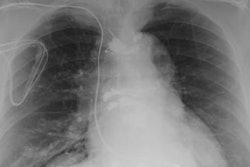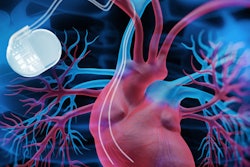
A new study published February 23 in the New England Journal of Medicine indicates that implantable cardiac devices may be safer in the MRI environment than previously thought. In more than 1,000 patients who received nonthoracic scans, researchers found no device or lead failures, even with devices that were not certified for use with MR imaging.
The presence of an implantable device such as a pacemaker or implantable cardioverter defibrillator (ICD) has long been considered a contraindication for MRI scanning due to MRI's strong magnetic fields. The U.S. Food and Drug Administration (FDA) has developed a special regulatory category, called MRI conditional, for implants that have been adapted specifically for use in MRI environments.
But some 2 million people in the U.S. and some 6 million worldwide have non-MRI-conditional implants, and at least half of these patients are expected to have a clinical indication for MRI during the lifetime of their devices, according to a research team led by Dr. Robert Russo of the Scripps Research Institute in La Jolla, CA (NEJM, February 23, 2017). The question is, could these patients still safely undergo MRI scanning?
To investigate, the Scripps team launched the MagnaSafe Registry, a prospective study designed to track patients who underwent clinically indicated 1.5-tesla MRI scans despite having implants that were not classified as being MRI conditional. At the request of the FDA, the study excluded patients receiving thoracic scans due to the higher perceived risk of adverse outcomes. Preliminary results of the study were presented at the American College of Cardiology meeting in 2013.
The MagnaSafe Registry focused on adult patients who had implants manufactured after 2001 and whose physicians determined they had a clinical need for a nonthoracic 1.5-tesla MRI scan. The researchers used a standardized prescanning protocol that called for adjustments to the devices based on patient characteristics.
For example, if a patient was asymptomatic and had an intrinsic heart rate of at least 40 beats per minute, the device was programmed to a no-pacing mode. If a patient was asymptomatic or had an intrinsic heart rate of less than 40 beats per minute, he or she was determined to be pacing-dependent and the device was reprogrammed to an asynchronous pacing mode. For patients with ICDs who were not dependent on pacing, bradycardia and tachycardia therapies were inactivated before the scan. Pacing-dependent patients with ICDs were excluded.
From 2009 to 2014, the researchers studied 1,000 pacemaker cases (818 patients) and 500 ICD cases (428 patients). Follow-up data were available for 1,395 cases at six months. Primary study end points included patient death, generator or lead failure requiring immediate replacement, and partial or full generator electrical replacement.
The researchers found that 75% of MRI scans were performed on the brain and spine, with patients spending a mean period of 44 minutes inside the magnetic field. Four patients reported symptoms of generator-site discomfort, while one patient with an ICD was pulled from the scanner bore after reporting a heating sensation at the site of the implant.
Russo and colleagues found no instances of patient death during the MRI scans, no generator or lead failures that required replacement, no loss of capture, and no cases of ventricular arrhythmia. There were five cases of atrial arrhythmia and six cases of electrical reset.
Some experts have suggested that implanted devices could be removed in patients requiring MRI scans and then replaced afterward, the authors noted in their discussion of the results. However, this could pose greater risks to patients than those associated with nonthoracic scans performed in the current study, as long as a standardized protocol such as the one used in the MagnaSafe Registry is employed.
"No patient who was appropriately screened and had the cardiac device reprogrammed according to our protocol had device or lead failure," the group wrote.
Study disclosures
Funding for the study was provided by St. Jude Medical, a developer of implantable cardiac devices, and others.




















